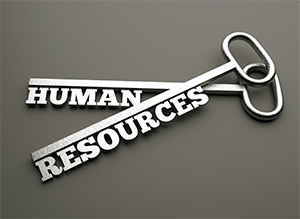
Your Design/shutterstock.com
In any practice, the physician owner and/or administrators are in charge of overseeing the responsibilities associated with human resources management. This includes employment and labor laws, government compliance issues, employee-related costs and the ever-present threat of employee litigation.
The central components of human resources management include staffing the practice; staying current with the legal environment; developing a compensation structure; creating an employee handbook; and executing procedures for recruiting, hiring, training, discipline and termination.
Staff the Practice
Structuring the staff to best fit the needs, size and culture of the practice is an important task. This will dictate how well the practice runs on a daily basis and patient satisfaction during encounters. It is important to understand the quality of care provided will be largely dependent on the skills and proficiency of the staff.
According to the Medical Group Management Association (MGMA), practices do not operate efficiently and at optimum financial performance when they are under- or overstaffed. Low staff levels constrict productivity and require employees and the physician owner to perform tasks that are outside of their areas of expertise and are an ineffective use of time. This may lead to problems in patient access and poor staff morale.1 Likewise, being overstaffed increases overhead and may lead to confusion as to which employee performs what task.
Ideally, practices should aim to follow rightsizing, defined as the systematic review of staffing levels, tasks and work processes to determine the appropriate number and mix of staff needed to meet business goals.¹ Rightsizing answers the questions: Do you have the right staff in place, and are they tasked with appropriate responsibilities? Rightsizing seeks maximum efficiency by matching the employee’s skill set to the work to be performed. The number of employees needed and the positions they will fill depends upon the type of professional and ancillary services provided and/or the physician’s preference.
Perform a Job Analysis
The staffing structure of every practice should always begin with a job analysis. This process identifies the individual tasks an employee performs, the situation in which they are performed and the qualities necessary for execution. This information should then be used to recruit for the position, identify appropriate candidates and set an appropriate and fair level of compensation. A job analysis consists of:
- Work Activities: Indicate activities performed;
- Equipment, Machines and Tools Used: What is used by the employee to perform their work;
- Work Performance: Anticipated time to perform activities, standards for work and expectation levels;
- Job Context: Physical work conditions, work schedule, organizational context (e.g., culture, climate, etc.), incentives and rewards; and
- Personnel Requirements: KSAs (knowledge, skills and abilities) or KSOs (knowledge, skills and other) the employee needs to do the job:
- Knowledge—facts and principles;
- Skills—well-learned proficiencies acquired through practice;
- Abilities—more stable traits or capabilities of a person; and
- Other—things not covered by the KSAs that are required (e.g., licensure, permit, education).
There are various methods used to collect information for a job analysis. Interviews, direct observation, diaries, and structured questionnaires are all helpful, but the best resources for the purposes of staffing a small medical practice are the ONET Resource Center and the U.S. Department of Labor’s (DOL) Occupational Outlook Handbook.
